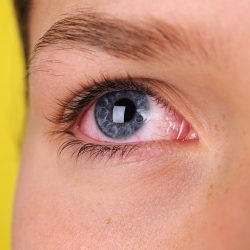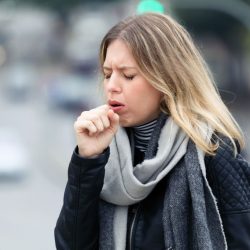A very large number of people suffer from a variety of digestive problems: epigastric burning, slow digestion, post-prandial bloating, drowsiness… However, sometimes paraclinical examinations do not reveal any lesions. X-rays are normal, endoscopy shows a normal appearance of the mucosa and biopsies reveal no histological changes. It is in these cases that homeopathic treatment will often provide invaluable help for these patients. In addition, it is necessary to follow a few dietary hygiene rules.
Medicines with essentially digestive tropisms
In the treatment of dyspeptic syndromes, homeopathy offers an individualised approach, particularly suitable when functional disorders persist despite reassuring medical examinations. It is based on close observation of digestive symptoms, often accompanied by general or emotional signs specific to the patient. Each medicine is chosen on the basis of the specific characteristics of these symptoms, thus making it possible to alleviate digestive discomfort while respecting the particular characteristics of each person.
Antimonium crudum :
The patient complains of heaviness and fullness in the epigastrium; he or she presents eructations that taste like ingested food. The disorders follow quantitative overeating. The tongue is covered with a thick, whitish coating, like milk, and the diarrhoea is made up of half-solid, half-liquid stools. The drug is particularly suitable for people who are fat, gluttonous and prone to impetiginous eruptions and hyperkeratosis.
Recommended dosage: Take Antimonium crudum 9CH, 5 granules once or twice a day.
Carbo vegetabilis :
This is a flatulence medicine, essentially supra-umbilical. Symptoms are aggravated by heat, the intake of milk or fats, and especially by alcohol, which makes the face flush. This medicine is particularly suitable for asthenic subjects with circulatory problems: cyanosis of the extremities, varicose hypodermatitis, etc.
Recommended dosage: Take Carbo Vegetabilis 9CH, 5 granules once or twice a day. For people who complain of redness of the face for the slightest consumption of alcohol, take 5 granules in 5CH, a quarter of an hour before a meal.
Asa foetida :
This is a medicine for aerophagia, which is suitable for numerous eructations with extreme flatulence and spasmodic contractions of the oesophagus giving the patient the impression of a ball rising from the bottom to the top
Posology: Take Asa foetida 5CH, 5 granules twice a day.
Robinia :
This is a medicine for hyperchlorhydric dyspepsia: the patient complains of burning pains in the epigastrium, sometimes pyrosis. The symptoms are aggravated at night, after meals and by fatty foods. The main concomitant signs are frontal or temporal headaches and, above all, watery, acidic vomiting.
Recommended dosage: Take Robinia 5CH, 5 granules twice a day.
Sulfuricum acidum :
The patient presents with burning of the oesophagus and stomach, tightness in the epigastrium, belching and very acid vomiting which irritates the teeth. These symptoms, which occur mainly after stress or after drinking alcohol, are aggravated by cold drinks and improved by hot drinks or local heat. They are often the result of a hiatal hernia, or possibly true gastritis. Oral aphthae, exhausting diarrhoea and purpura sometimes occur at the same time.
Dosage: Take Sulfuricum acidum 5CH or 9CH, 5 granules once or twice a day.
Nux moschata :
With this medicine, flatulence is extreme: everything the patient eats seems to turn into gas. Concomitant symptoms are often present: hiccups, dyspnoea, dry mouth, palpitations. This medicine is often indicated for very drowsy patients.
Recommended dosage: Take Nux moschata 5CH, 5 granules twice a day.
Chelidonium majus :
This medicine is indicated in cases of pain in the hepatovesicular region radiating to the tip of the right scapula. The patient experiences heaviness with postprandial somnolence and, sometimes, concomitant migraines or headaches. The stools are light yellow and tend to be diarrhoeal.
Posology: Take Chelidonium majus in low dilutions, from 6DH to 5CH.
Hydrastis canadensis :
This medicine is also suitable in cases of hepatovesicular pain, but in rather thin, tired subjects. They have a yellowish tongue and a dry mouth. They are prone to mouth ulcers and constipation.
Dosage: Take Hydrastis canadensis in a low dilution, from 6DH to 5CH.
Medicines with emotional disorders associated with digestive disorders
Digestive disorders are often closely linked to emotional states. Stress, upsets or emotional shocks can trigger or aggravate these symptoms, making their management more complex. By taking account of this psycho-emotional dimension, homeopathy offers specific medicines that act on both the digestive and nervous systems, providing patients with overall, lasting relief.
Nux vomica :
The patient complains mainly of cramps and burning in the epigastric region, and very often feels heavy. These disorders occur after eating too little or too much alcohol, various stimulants (coffee, spices, etc.) or medication. They are aggravated one to two hours after a meal; immediately afterwards, the patient is drowsy. All these symptoms are improved by a short nap. Concomitant symptoms are often noted: ineffective nausea, appearance of the tongue which is loaded, especially in its posterior part, bad breath, spasmodic constipation with ineffective cravings, haemorrhoids. This medicine is particularly indicated for hypersensitive, short-tempered, overworked and sedentary people.
Dosage: take Nux vomica 9CH, 5 granules once or twice a day before meals.
Ignatia :
Digestive problems are variable and paradoxical: cramps, spasms, burning… Their location also varies. These disorders mainly occur after emotional stress: grief, annoyance, bereavement… The symptoms are not typical; they just get worse around 11am and improve with distraction. The concomitant symptoms are also highly variable: yawning, deep sighs, a lump in the throat, nausea improved by eating, palpitations, etc. This neuro-vegetative dystonia medication is suitable for patients with emotional hypersensitivity, often paradoxical behaviour and marked anxiety.
Recommended dosage: Take I gnatiaen 9 or 15CH, depending on the severity of the nervous signs, 5 granules once or twice a day.
Lachesis :
The symptoms here are cramp-like or painful; they are located in the epigastrium, which is often painful to the touch, and are often the result of excessive alcohol consumption, but they are also frequently encountered during the menopause. They are aggravated by heat, constriction (the patient cannot bear a belt) and sleep. Depending on the case, the main concomitant signs are premenstrual syndrome, hot flushes, haemorrhoids and rectal bleeding. Lachesis is particularly indicated for congestive, blotchy skin. They have a distrustful, jealous, cyclothymic temperament; they easily go from being loquacious to silent.
Dosage: Depending on the severity of the nervous signs, take Lachesis 9 or 15CH, from 5 granules a day to one dose a week.
Medicines with general disorders associated with digestive problems
Some digestive disorders are part of a wider context, accompanied by general symptoms such as fatigue, circulatory problems or various physiological reactions. In these cases, homeopathy makes it possible to treat these global imbalances by targeting the underlying causes while relieving the digestive symptoms. The choice of medicine is based on a holistic view of the patient, taking into account all his disorders and characteristics.
Pulsatilla :
For this medicine, digestive symptoms are variable: heaviness, epigastric heaviness, sometimes tearing pain. They often follow the ingestion of fatty foods(Pulsatilla is one of the main drugs for the poor digestion of fats), pastries or ice cream. They occur mainly one to two hours after meals and are aggravated by the heat of a room, but improve in the fresh air. Concomitant signs are mainly diarrhoea and yawning. Patients are cold and not thirsty. The indication for Pulsatilla is reinforced if the patient is sensitive to this substance: subjects with venous congestion (varicose veins, acrocyanosis, etc.), catarrhal irritation of the mucous membranes; these people, who have an aversion to fats, are hypersensitive and shy.
Dosage: Take Pulsatilla 9CH, 5 granules once or twice a day in the case of isolated dyspeptic disorders; if the characteristics of the sensitive type are present, take 15 or 30CH, one dose a week.
Sepia :
The symptoms, which consist of heaviness, pulling, heaviness or, on the contrary, a feeling of emptiness, are located in the epigastrium. They are often the result of gastric and vesicular ptosis or stress. They are also aggravated by cooking smells, and the feeling of emptiness in the stomach is not improved by eating. Finally, they are accompanied by cravings for acidic foods, morning sickness, abdomino-pelvic heaviness, constipation with a sensation of a ball in the rectum and haemorrhoids. This medicine is particularly indicated for skinny subjects with brownish patches around the eyes and mouth, who tend towards psychasthenia and who present symptoms of both psoric and sycotic reaction modes (liver disorders, portal hypertension, genitourinary infections, mycoses, etc.).
Dosage: Take Sepia 9 or 15CH, 5 granules a day to one dose a week.
Thuja :
Digestive problems occur throughout the abdomen. The main symptoms are very marked flatulence, gurgling and watery noises, associated with aerogastria and aerocolia. They are aggravated two to three hours after eating, by cold, onions and starchy foods, and improved by heat. Concomitant signs are not characteristic: nausea, sometimes diarrhoea… Thuja is particularly suitable for people who are corpulent, frigid, prone to phobias (particularly carcinophobia) and presenting symptoms of sycotic reaction: chronic catarrh of the mucous membranes, skin production, etc.
Dosage: Take Thuja 9 or 15CH, 5 granules a day to one dose a week.






